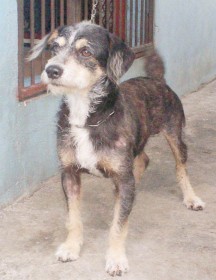Continued from last week
Tranquillizers
Tranquillizers are drugs used to relieve anxiety, treat motion sickness, and sedate a dog for ease of handling and treatment.
 The exact mode of action of tranquilizers is variable. Some act on the brain to modify behaviour and to increase the threshold of nausea and vomiting (ie, reduce the possibility of throwing up). Others achieve their effects primarily through sedation. They are of the antihistamine class and are available at pet stores.
The exact mode of action of tranquilizers is variable. Some act on the brain to modify behaviour and to increase the threshold of nausea and vomiting (ie, reduce the possibility of throwing up). Others achieve their effects primarily through sedation. They are of the antihistamine class and are available at pet stores.
Tranquillizers are safe and effective when used as directed and in the right situation. Nevertheless, even in the best of circumstances, untoward results occur. Human tranquillizers (eg Valium and Librium) should not be given to dogs without first discussing their use with your veterinarian.
Long-term tranquillizers are not recommended. Except for motion sickness, squibs and firecrackers, thunderstorms and other temporary upsets of this sort, behaviour disorders in dogs are best treated by identifying the cause of the problem and taking steps to correct it. Tranquillizers should not be given to acutely injured dogs as they lower the blood pressure.
In passing, let me make it clear that, irrespective of the circumstance(s), I

never prescribe or hand out tranquilizers/sedatives to a client to administer to pets. Note that tranquillizers/sedatives come under the category of drugs that a doctor has to keep in a safe and secure place.
I will now share with you my reasons for not giving clients tranquillizers/sedatives. If a client collects from me five barbiturate tablets purportedly to calm his/her dog (without my having seen the dog), and then later goes to another colleague and collects five more tablets and continues collecting tablets from other vets, then that person could, at the end of the day, be in possession of many barbiturate tablets. Now, if that person – for whatever reason – swallows those tablets … you see where I am going with this. In the end effect, the vet(s) may be liable for the demise (even terminal) of the tablet collector. No vet should find him – or herself in this situation. I strongly advise my colleagues that, notwithstanding the pleas and coercive arguments of pet owners, they should never ever give or write a prescription for sedatives – the overdose of which can be lethal. Some of the arguments are quite logical and convincing. For example, the client might plead that his dog really needs veterinary care because of the pain and distress it is experiencing; but the owner can’t bring the dog because any attempt to move the animal results in a vicious reaction from the dog. Since the vet has taken an oath to assuage/prevent pain and suffering, the vet should hand over the sedating tablets. Well, the best option of the caring vet is to visit the ailing animal and administer the sedative as an injection.
Another argument for the need of sedatives is that the animal is travelling by plane to a foreign land. In order for the pet to accommodate the lengthy time in the hold (baggage section) of the plane, it would be desirable for that animal to sleep through the entire travelling ‘ordeal.’ Well, once the animal is deposited in the hold, and is travelling at 30,000 feet, even the most hyperactive dog will immediately acclimatize itself to the environment. It will probably sleep all the way through the flight. Also, if a sedated dog arrives at the foreign port, still under the influence of the sedative, the port vet could conclude that the animal is suffering from a malady of unknown origin, and therefore must not be allowed into the country; or at least the animal must be seriously and securely quarantined. Let’s be frank: the owner does not want this unnecessary grief – especially when there is no real need to tranquillize the animal.
Perhaps, the request most often made for sedatives from the vet comes from persons/institutions who/ which want to catch stray dogs, so that the latter can be removed from the area where they are a nuisance. Well, other methods to capture stray dogs (that is in itself a chapter for discussion) must be implemented. I, for one, will not place sedatives in the hands of any person for this reason.
Next week we’ll deal with the common misuse of other types of medications administered willy-nilly to our companion animals.
Please implement disease preventative measures (vaccinations, routine dewormings, monthly anti-heartworm medication, etc) and adopt-a-pet from the GSPCA’s Animal Clinic and Shelter at Robb Street and Orange Walk, if you have the wherewithal to care well for the animals. Do not stray your unwanted pets, take them to the GSPCA’s Clinic and Shelter instead. If you do not wish your pet to have puppies or kittens, you may exploit the GSPCA’s free spay and neutering programme. If you see anyone being cruel to an animal, or if you need any technical information, please get in touch with the Clinic and Shelter by calling 226-4237.

